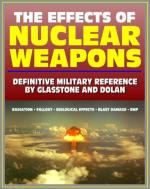|
This section contains 3,088 words (approx. 11 pages at 300 words per page) |

|
While scientists were developing the mechanism of the atomic bomb at Los Alamos, two large separating plants in Oak Ridge, Tennessee, and Hanford, Washington, were producing fuel for the bomb. The Oak Ridge facility, officially known as the Clinton Engineer Works, was built in 1942. It initially produced both uranium-235 and plutonium. (Later plutonium production was shifted to the Hanford plant.) Uranium- 235 and plutonium are the fissionable materials used to make nuclear bombs. To obtain these two rare elements, however, they must be extracted from uranium. Uranium-235 was separated from uranium-238 (the common form found in nature) at Oak Ridge through three methods: magnetic separation, liquid thermal diffusion, and gaseous diffusion. A less complex chemical separation was used to extract plutonium. Once extracted, uranium-235 was the explosive element used in the bomb "Little Boy" that was dropped on Hiroshima. Plutonium...
|
This section contains 3,088 words (approx. 11 pages at 300 words per page) |

|




